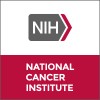
Study of a New Intravenous Drug, Called S65487, in Patients With Acute Myeloid Leukemia, Non Hodgkin...
Relapsed or Refractory Acute Myeloid LeukemiaRelapsed or Refractory Non-Hodgkin Lymphoma2 moreThe purpose of this first in human study is to assess safety, tolerability, Pharmacokinetic (PK) and preliminary clinical activity and to estimate the Maximum Tolerated Doses (MTD(s))/ Recommended Phase 2 Doses (RP2D(s)) of S65487 as single agent administered intravenously (i.v.) in adult patients with refractory or relapsed Acute Myeloid Leukemia (AML), Non-Hodgkin Lymphoma (NHL), Multiple Myeloma (MM) or Chronic Lymphocytic Leukemia (CLL).

Larotrectinib in Treating Patients With Previously Untreated TRK Fusion Solid Tumors and TRK Fusion...
Central Nervous System NeoplasmInfantile Fibrosarcoma3 moreThis phase II trial studies the side effects and how well larotrectinib works in treating patients with previously untreated TRK fusion solid tumors and TRK fusion acute leukemia that has come back. Larotrectinib may stop the growth of cancer cells with TRK fusions by blocking the TRK enzymes needed for cell growth.

A Study of CPI-613 for Patients With Relapsed or Refractory Burkitt Lymphoma/Leukemia or High-Grade...
LymphomaLeukemiaThe purpose of this study is to test any good and bad effects of the study drug, CPI-613.

Pevonedistat and Belinostat in Treating Patients With Relapsed or Refractory Acute Myeloid Leukemia...
Recurrent Acute Myeloid LeukemiaRecurrent Myelodysplastic Syndrome2 moreThis phase I trial studies side effects and best dose of pevonedistat and belinostat in treating patients with acute myeloid leukemia or myelodysplastic syndrome that has come back (relapsed) or does not respond to treatment (refractory). Chemotherapy drugs, such as pevonedistat and belinostat, work in different ways to stop the growth of cancer cells, either by killing the cells, by stopping them from dividing, or by stopping them from spreading.

Lentivirally Redirected CD123 Autologous T Cells in AML
Acute Myeloid Leukemiain Relapse4 morePhase 1 open-label study to estimate the safety, manufacturing feasibility, and efficacy of intravenously administered, lentivirally transduced T cells expressing anti-CD123 chimeric antigen receptors expressing tandem TCRζ and 4-1BB (TCRζ /4-1BB) costimulatory domains in Acute Myeloid Leukemia (AML) subjects.

Moxetumomab Pasudotox-tdfk (Lumoxiti(TM)) and Either Rituximab (Rituxan(R)) or Ruxience for Relapsed...
Hairy Cell LeukemiaBackground: Hairy cell leukemia (HCL) is a rare, slow-growing blood cancer in which the bone marrow makes too many of certain white blood cells. The antibody Rituximab/Ruxience binds to a protein in cancerous white blood cells and is often used to treat HCL. Researchers want to see if combining it with the drug Moxetumomab pasudotox-tdfk (also called Lumoxiti) can fight HCL better. Objective: To test the safety of Moxetumomab pasudotox taken with Rituximab/Ruxience for people with HCL or HCL variant. Eligibility: People age 18 years and older with HCL or HCL variant that has not responded to standard therapy Design: Participants will be screened with: Medical history Physical exam Blood, heart, and urine tests Test of blood oxygen levels Review of bone marrow. This can be from previous test results or a new sample. Scans Exercise test Participants will get the study drugs in up to 8 cycles. A cycle will last about 28 days. The study drugs will be given through a plastic tube in a vein. In the first week of cycle 1, participants will have: 1 visit to get Rituximab or Ruxience for 7.5 hours 3 visits to get Lumoxiti for 30 minutes per infusion In the first week of cycles 2-8, participants will have: visit to get Rituximab/Ruxience for 2-4 hours and Lumoxiti for 30 minutes visits to get Lumoxiti for 30 minutes per infusion Participants will be asked to drink lots of water and take aspirin during the cycles. They will get drugs to minimize allergic reactions. Participants will repeat screening tests at visits throughout the cycles and 1 follow-up visit. They may have an eye exam. ...

Testing The Addition of a New Anti-cancer Drug, Venetoclax, to the Usual Treatment (Ibrutinib and...
Chronic Lymphocytic LeukemiaSmall Lymphocytic LymphomaThis phase III trial compares adding a new anti-cancer drug (venetoclax) to the usual treatment (ibrutinib plus obinutuzumab) in older patients with chronic lymphocytic leukemia who have not received previous treatment. The addition of venetoclax to the usual treatment might prevent chronic lymphocytic leukemia from returning. This trial also will investigate whether patients who receive ibrutinib plus obinutuzumab plus venetoclax and have no detectable chronic lymphocytic leukemia after 1 year of treatment, can stop taking ibrutinib. Ibrutinib may stop the growth of cancer cells by blocking some of the enzymes needed for cell growth. Immunotherapy with obinutuzumab may induce changes in body's immune system and may interfere with the ability of cancer cells to grow and spread. Venetoclax is in a class of medications called B-cell lymphoma-2 (BCL-2) inhibitors. It may stop the growth of cancer cells by blocking Bcl-2, a protein needed for cancer cell survival. Giving ibrutinib and obinutuzumab with venetoclax may work better at treating chronic lymphocytic leukemia compared to ibrutinib and obinutuzumab.

A Study of FMT in Patients With AML Allo HSCT in Recipients
Acute Myeloid LeukemiaAllogeneic Hematopoietic Cell TransplantationThis is a randomized, double-blind, placebo-controlled clinical trial of Fecal Microbiota Transplant (FMT) in 2 independent cohorts (60 acute myeloid leukemia patients undergoing intensive chemotherapy and 60 Allo-HCT patients). Participants in each cohort will be randomized in a 2:1 ratio to receive up to 3 treatments of FMT vs. placebo after each exposure to antibacterial antibiotics until 3 months after randomization.

Evaluation of the Safety and Efficacy of the Association of Ibrutinib and Daratumumab in Relapsed/Refractory...
Relapsed or Refractory Chronic Lymphocytic LeukemiaIbrutinib, a first-in-class Bruton Tyrosine kinase (BTK) inhibitor, has become an established treatment in relapsed/refractory chronic lymphocytic leukemia (CLL). However, despite a considerable improvement of Progression Free Survival (PFS) and Overall Survival (OS) in comparison with historical controls, the prognosis of patients with 17p deletion (del17p) remains a concern, as it is clearly much less favourable than that of patient without del17p. Again, TP53 mutations correlated to poorer prognostic in Relapsed/Refractory (R/R) CLL patients treated with ibrutinib (Brown JR et al,2018). Despite these therapeutic advances, the treatment of CLL with TP53 disruption thus remains a difficult issue that warrants evaluation of alternative treatment strategies, in particular the use of ibrutinib in combination with other agents. A body of evidence suggests that targeting the extracellular molecule CD38 might be an interesting option. CD38 is a transmembrane glycoprotein with multiple receptor and enzymatic functions. The interaction of CD38 with its ligand CD31 (also known as Platelet Endothelial Cell Adhesion Molecule (PECAM-1)) not only plays a role in the binding and the migration of leucocytes through the endothelial cells wall but also triggers the activation of intracellular pathways involved in the differentiation and activation of B cells. Previous results strongly suggest that CD38 favours the expansion of CLL clones not only directly by transducing a proliferation signal but also by directing them to anatomic sites where they find favourable conditions for proliferation and survival. Daratumumab is a first-in-class human IgG1ĸ monoclonal antibody (mAb) that binds CD38-expressing malignant cells with high affinity. Daratumumab induces tumor cell death through multiple mechanisms such as antibody-dependent cell-mediated cytotoxicity (ADCC), complement dependent cytotoxicity (CDC), antibody-dependent cellular phagocytosis (ADCP) and induction of apoptosis (de Weers et al, 2011). Recent data show that daratumumab may also display an immunomodulatory effect through depletion of a subset of immunosuppressive CD38+ Tregs (Krejcik et al, 2016). Early-stage clinical trials found daratumumab to be safe and to display encouraging clinical activity as a single agent in relapsed/refractory multiple myeloma (MM) patients (Lockhorst et al 2016, Lonial et al, 2016). Overall response rate was 31%, with rapid (median 1 month) and durable responses in this heavily pretreated MM population. Interestingly, no patient discontinued the treatment because of drug-related adverse events. These results led to approval of daratumumab in relapsed/refractory MM in December 2015. The clinical efficacy of daratumumab along with its very favourable safety profile supports its investigation in other lymphoproliferative malignancies. In particular, the expression of CD38 in poor prognosis CLL and the key role of CD38 in CLL biology provide a basis for examining the potential of daratumumab in this disease. In preclinical studies, (Matas-Céspedes et al, 2016; Manna et al, 2017) Daratumumab efficiently kills CLL cell lines and patient-derived CLL cells by ADCC and ADCP in vitro. Daratumumab modulates CLL-T reg levels and increase cytotoxic effector T cells. Rationale for combining ibrutinib with daratumumab: These data suggest that combining ibrutinib with daratumumab might have a synergistic or additive effect. Both drugs inhibit B cell receptor (BCR) signalling via two different converging pathways, i.e. BTK and CD38/ZAP70/ERK (Deaglio et al, 2007). In vitro, Manna et al have shown that daratumumab is able to modulate BCR signaling. Interestingly, the ibrutinib /daratumumab combination significantly enhanced mitochondrial-mediated apoptosis bth in CD38 high and CD38 low CLL cells (Manna et al, 2017). Altogether, this provides a rationale for evaluating the safety and efficacy of the association of daratumumab with ibrutinib in high-risk relapsed/refractory patients for whom the standard-of-care using ibrutinib as a single agent has demonstrated limitations in terms of long-term disease control. Primary objective of the study: to determine the efficacy of a treatment combining daratumumab and ibrutinib in a poor risk population of relapsed CLL patients with TP53 dysfunction. Secondary objectives of the study : to determine the safety profile of daratumumab in combination with ibrutinib in CLL patients. Inclusion period: 24 months Treatment duration (ibrutinib + daratumumab): continuous, until disease progression or unacceptable toxicity. Follow-up period: will begin once the subject discontinues study treatment, during 2 years.

Bosutinib in Pediatric Patients With Newly Diagnosed Chronic Phase or Resistant/Intolerant Ph +...
Philadelphia Chromosome Positive CMLAccelerated Phase Chronic Myelogenous Leukemia2 moreThis is a Phase 1-2, multicenter, international, single-arm, open-label study designed to identify a recommended dose of bosutinib administered orally once daily in pediatric patients with newly diagnosed chronic phase Ph+ CML (ND CML) and pediatric patients with Ph+CML who have received at least one prior TKI therapy (R/I CML), to preliminary estimate the safety and tolerability and efficacy, and to evaluate the PK of bosutinib in this patient population.
